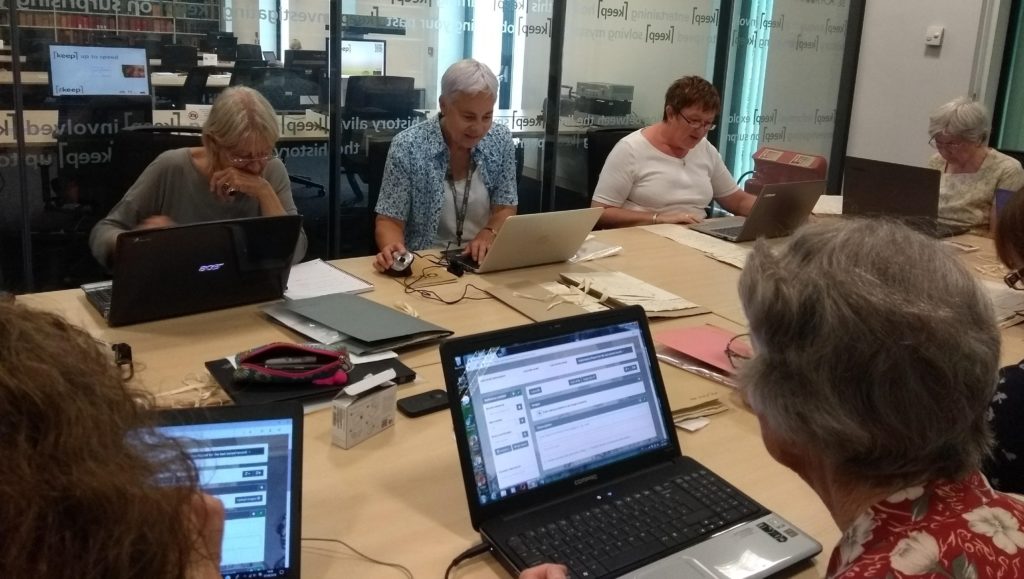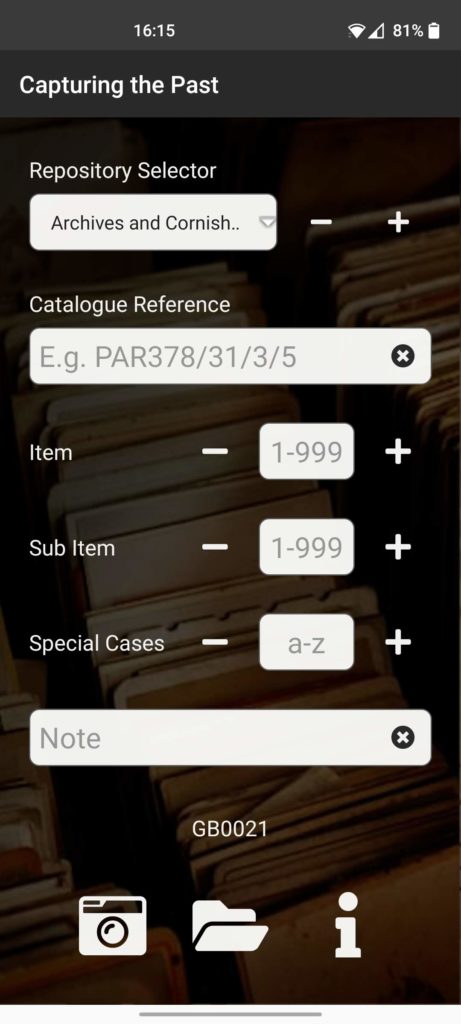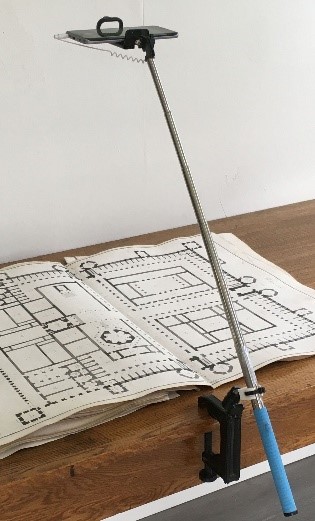In recent years the nature of historical research has changed. Most family and local historians now combine the use of online digital resources with the photography of un-digitised materials in physical archives for later analysis. This methodology has fundamentally transformed the nature of historic research. Now, a single visit to an archive might produce hundreds of images. During the same years thousands of ‘citizen historians’ have come to contribute to large-scale collaborative heritage projects, drawing together academic historians, repositories, and local and family historians to co-create new ‘participatory archives’. Yet collaborative public history projects have taken a little longer to incorporate this ‘click and collect’ methodology. Capturing the Past is designed to create the tools and workflows that will optimise archival photography to the benefit of all parties. It draws on this democratisation of history by using the affordances of smart phones and the cloud; of digital cameras and the growing significance of public history to recreate a community of sharing and scholarship

During a previous project, Small Bills and Petty Finance, the team developed a suite of digital tools as a method of undertaking large-scale data collection and management. Capturing the Past, the AHRC funded follow-on project, aims to develop the phone app used in this project to support image collection for individual and collaborative research. By working with community groups, academic or family and local historians it will explore methods of providing this easy, cheap, and simple technical solution for image capture.
The team is now adapting this app for more general usage. Over the next few months the project will:

- create a customisable phone app for both Android and Apple phones that embeds the relevant archival reference and a repository code in the image meta-data (photo information generated by your mobile phone). Made freely available through Google Play store or Apple equivalent
- create methods of export or download that provide a simple method of re-using the data, including with other platforms
- develop tutorial and documentation that will allow anyone to make a cheap, lightweight ‘digitisation-stick’ to facilitate high quality phone-based photography in archives.
Finally, leaning over a document, taking numerous photos, is hard work. A phone holder is the most sensible method of ameliorating that back-breaking work. These ‘holders’ or ‘sticks’ allow smart phones to be held still above a document, and for a phone’s camera to be operated remotely (via the ‘stick’s’ button, a Bluetooth device or the headphone volume + button) to avoid shake. Initially, we will test some ready-made, easily available solutions – many of which appeared during lockdown to aid mobile phone handling in slightly different ways.

Second, we will re-examine the prototype DIY digitization-stick developed in our initial project. This was built from an inexpensive clamp, a selfie-stick, a domestic water pipe clip and a cable tie. We have manufactured and distributed some 60 ‘digi-sticks’ so far to researchers working in 15 countries.
If you run a community group or other heritage group, please get in touch if you would like some support with your information or image collection processes. We are happy to help both institutional and community archives.


Recent Comments